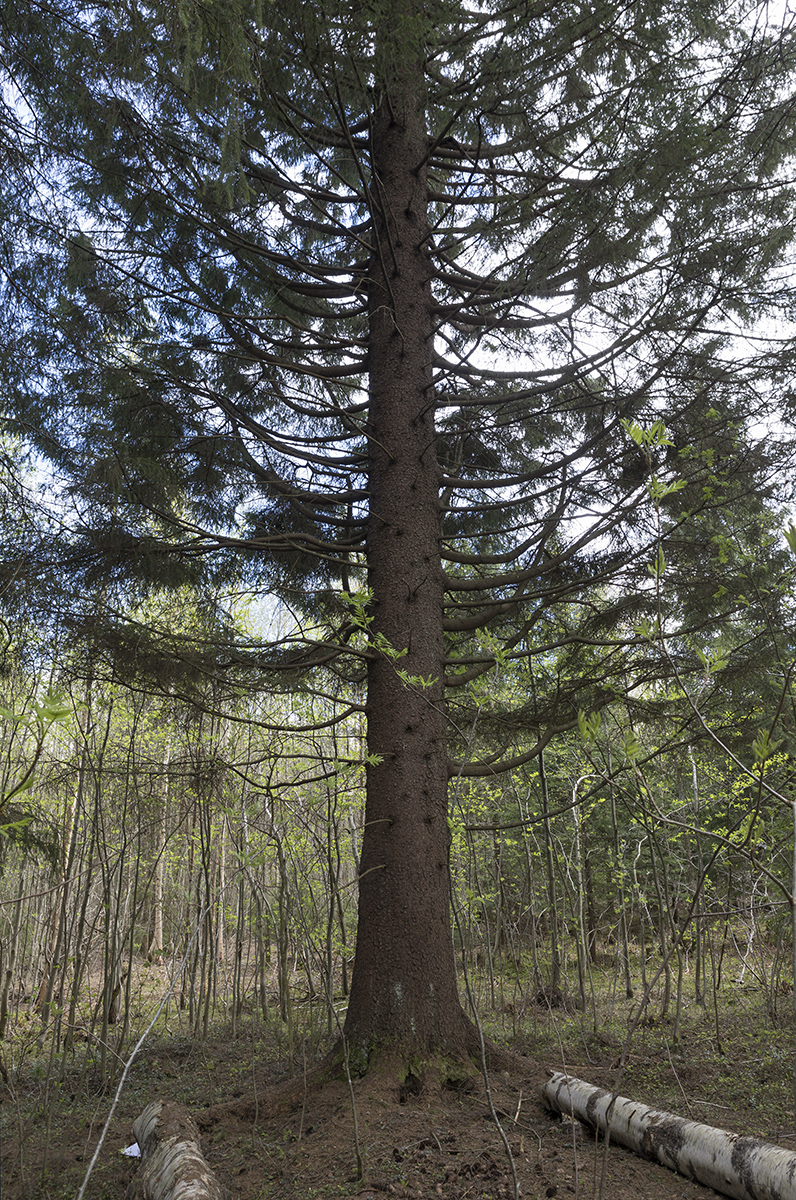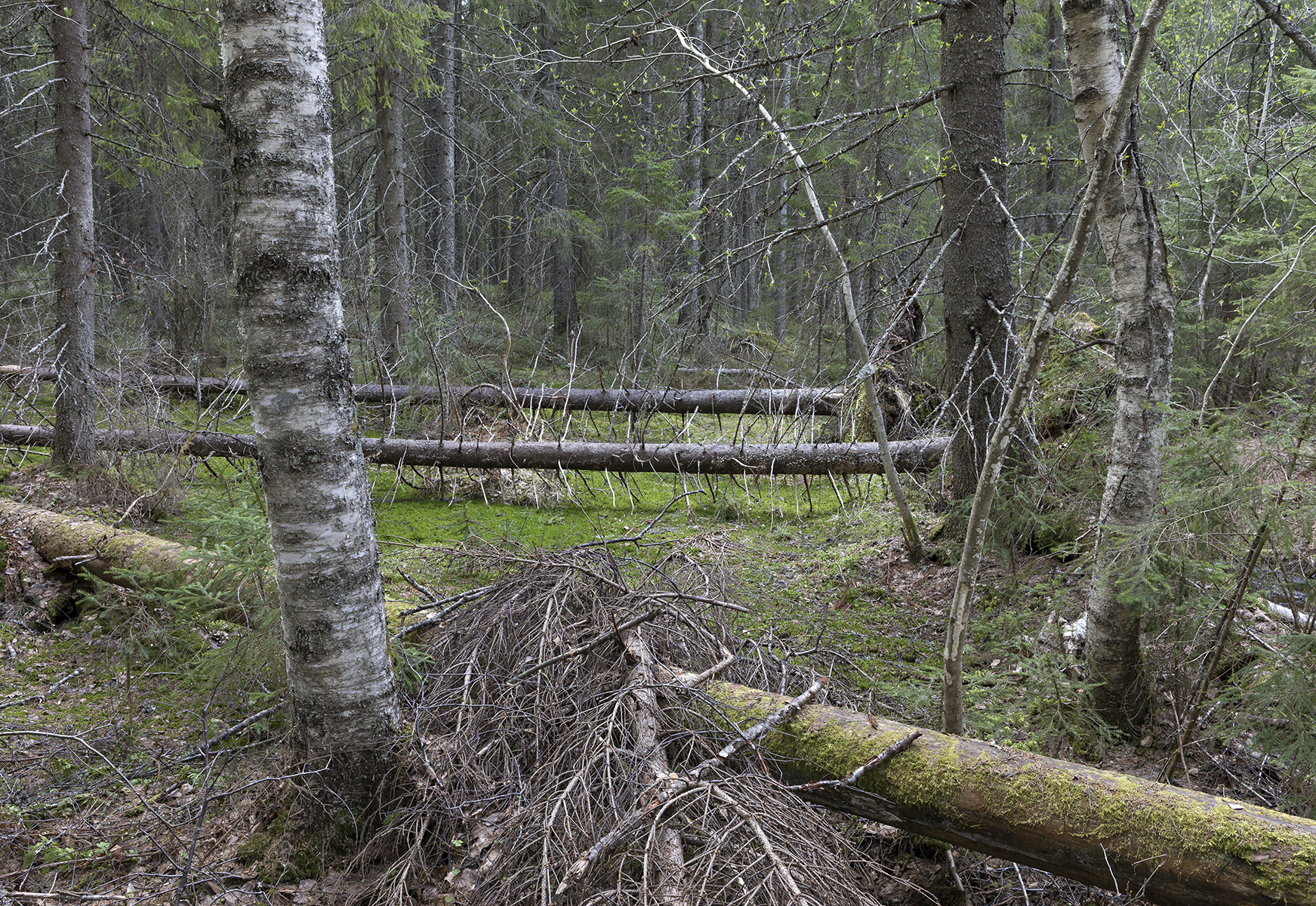Hippiäinen - GoldCrest Forest, Finland
History of the site
Hippiäinen / GoldCrest Forest ICCA is a small old-growth forest site located in the village of Selkie, North Karelia, Finland. It is one of the last natural forests left in Selkie and interconnected with a OGF site which is in total 8,58 hectares.
Hippiäinen / GoldCrest Forest ICCA was initially owned by the Kontiolahti municipality. The Selkie village ski track, hiking trails and school forest are located there. The village school that has a programme of Karelian traditions and nature is located only 200 meters away from the Hippiäinen / GoldCrest Forest ICCA. The 6,58 hectares of the interconnected OGF were protected on private landowner’s land in early 2010s as there was a Red List species flying squirrel (Pteromys volans) had been found on the private land owner side of the forest. However the municipally owned forest was without protection even though it is very important to the Selkie village and contains equally high biodiversity values. In late 2018 the Kontiolahti municipality (the center of the municipality is approximately 30 kilometers away from Selkie) decided that they will clear-cut the Hippiäinen / GoldCrest Forest ICCA site.
Snowchange Cooperative, a community organisation that is located in Selkie, contacted the municipality to ask what could be done to avoid industrial forestry on the site. The parties discussed a range of options and then Snowchange offered to buy the site under its Landscape Rewilding Programme and establish the Hippiäinen / GoldCrest Forest as a Community-Conserved area. The village and the school would be involved in the governance of the forest for future. By October 2019 the parties agreed on the timber value and land purchase and completed it in November 2019. Between November 2019 and March 2020 Snowchange also sought formal nature conservation status to the forest, that was granted in March 2020 with the stipulations that guarantee the critical indicators of Finnish ICCAs – hunting, everyman’s rights, berry picking and rights to maintain trails in the forest. Additionally the school children can utilize the forest in their plays and games. Hippiäinen / GoldCrest Forest ICCA allows the school (and other) children in the village a direct immersion into the old-growth “ordinary” experiences such as blueberry and lingonberry picking and observing ordinary OGF species in a real forest setting. These kind of early natural experiences are highly important for younger generations.
Families involved, as well as the Village Council of Selkie, the Village School of Selkie and other village organisations maintain presence and traditional land use forms in Hippiäinen / GoldCrest Forest ICCA. It is actively used by the village for hunting, bird watching, skiing, berry picking, mushroom picking and hiking. Especially hunting in principle and for small game in this case is an important traditional land use form that is compatible with the ICCA spirit and intent. Old growth taiga forests support traditional-cultural subsistence, like hunting, berry picking, cultural-spiritual health, and protect against the larger threat of mining in the area. As well, they will emerge as carbon sinks and serve as biodiversity hotspots.
Biodiversity highlights
The interconnected old-growth sites is 8,58 hectares. The Hippiäinen / GoldCrest Forest ICCA constitutes 2 hectares of the site with the remainder in private landownership but strictly conserved by the state measures as an OGF site. It contains over 100-year-old European spruce (Picea abies subsp. abies) dominating the forest and contains over 650 cubic meters of timber in 2 HAs (highly dense OGF site). Village people have detected the spreading of invasive Himalyan balsam (Impatiens glandulifera) entering into the forest. In 2019 the visible individuals were removed but in the future local governance of the site these invasives are continuously removed as a management action to protect native species.
For mammals this ICCA site is the home of flying squirrel (Pteromys volans). European Brown Bear,moose, lynx, forest hare and other common boreal species visit the site. Bird surveys have detected 27 bird species in the forest. For example Common Caffinch (Fringilla coelebs), Willow Warbler (Phylloscopus trochilus), Common redstart (Phoenicurus phoenicurus), Eurasian Wren ((Troglodytes troglodytes) are nesting in the area. However of special importance on the site is the GoldCrest (Regulus regulus) for traditional-cultural reasons. This is why the ICCA has been named “GoldCrest”.
Information provided by Tero Mustonen, Snowchange Co-op, March 2020
http://www.snowchange.org/2020/04/third-icca-site-...
This case study was originally published by UNEP-WCMC in March 2020. The content was provided by the custodians of this ICCA. The ICCA has been self-declared and has been gone through a peer-review process to verify its status. More details on this process can be found here. The contents of this website do not necessarily reflect the views or policies of UN Environment Programme or WCMC.

